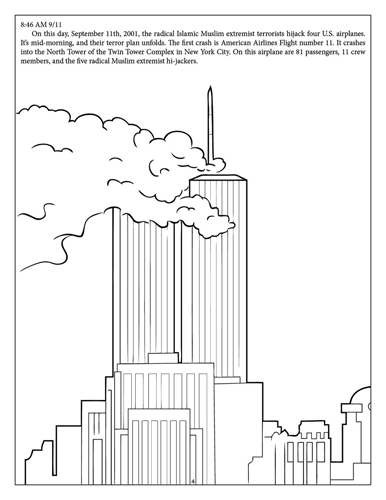
(Image Credit: We Shall Never Forget 9/11)
It didn’t take long for a media storm to emerge around Really Big Coloring Books new title We Shall Never Forget 9/11: The Kids' Book of Freedom. It was quickly and roundly criticized for its heavy-handed portrayal of Muslims. In the face of these criticisms Wayne Bell, the publisher at Really Big Coloring Books, has steadfastly argued that the book only shows the truth of what happened. It’s fairly clear though that the book slips easily into the popular narrative of freedom-hating-Muslims attacking freedom-loving-Americans because they hate our freedom. We Shall Never Forget isn’t an especially smart piece of propaganda, though. The play between the large amount of text and the inconsistent images make it hard to pin down how, exactly, its message is delivered.
In a video on their website Really Big Coloring Books reminds us that this is a pedagogical tool. And as such first we have to ask who the intended audience is. Who exactly is this book supposed to be teaching? 9/11 happened 10 years ago. I don't believe that it's unfair to state that almost anyone that can actually remember the day has outgrown coloring books. Unlike the ill-received coloring book Something Scary Happened, put together in 2003 by the Freeborn County Crisis Response Team, We Will Never Forget is ultimately intended for an audience that cannot forget in the first place because there is nothing to remember. So perhaps the audience then isn't necessarily children along but parents with young children. As such, it might be best to look at We Will Never Forget 9/11 as a textual and visual history book geared towards parents looking to teach their children a particular 9/11 history.
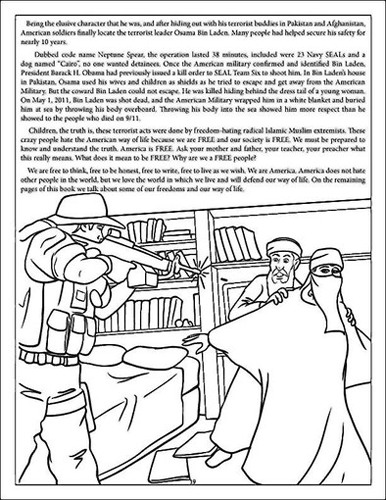
(Image Credit: We Shall Never Forget 9/11)
One of the more interesting aspects of this page is the extreme dissonance it presents itself with. Many of the images in this coloring book are created in a kind of realist style. There is an attention to detail that might require a colored pencil rather than the standard crayon. The bin Ladin kill shot, though, looks thoroughly cartoonish. The subject matter, though, is anything but. Coloring books are no strangers to violence. There are plenty of books featuring superheroes fighting villains in standard comic style. You'll often find the two foes frozen in mid-punch. What isn't so common, though, is the level of immediate violence presented here. This is, of course, compounded by the fact that this book attempts to present actual events rather than imaginations.
We are presented with somewhat more than a final showdown between Osama bin Ladin and the men that ultimately killed him. The first thing a viewer will notice is the armed SEAL staring down his rifle at bid Ladin and his wife. This isn't an unfamiliar image, especially to anyone who remembers the Elián González debacle in the late 90s. And while there are only so many different ways to display an armed man aiming at two unarmed people I can't help but draw a connection between the two images. Their image is, to a degree, undermined by the broad cultural memory of their audience--parents with young children. At this point it isn't too terribly different from the above mentioned super hero books. You've got the valiant hero about to take out the cartoonish bad guy. But we're not looking at a standoff.
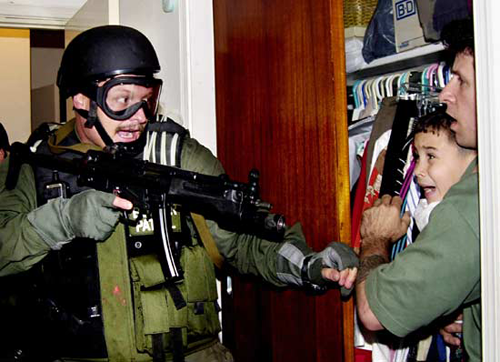
(Image Credit: Alan Diaz)
This isn't the Elián González picture. Instead what we're seeing is the bullet as it flied toward bin Ladin, as he hides behind his wife (this human shield narrative, though, was almost immediately backed away from by the White House). So that in the end, when the full image is taken in, we're privy to not only violence, but imminent death wrapped in the worst kind of cartoon veneer all while the coloring book editorializes the event and instructs children to "ask your mother and father, your teacher, your preacher what it really means. What does it mean to be Free? Why are we a FREE people?"
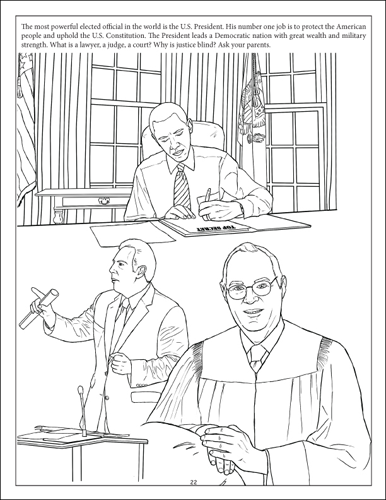
(Image Credit: We Shall Never Forget 9/11)
The level of text in this book is pretty curious. It almost makes it hard to imagine exactly how this whole thing functions. Is there a combined action where the kid furiously colors burning towers while their parent plows through the text? Perhaps first they sit down to read through it--although the text is clearly directed at children as they are frequently asked to ask their parents about various issues--then, with the story in their memory they color things in. In the end it feels like this book was less intended for any real practical use and more that it is just an attempt (a successful attempt--this has been Really Big Coloring Books fasted selling book ever) at cashing in on the 9/11 anniversary with a clumsily delivered political message.
P.S. While looking for images of We Shall Never forget I stumbled across many from the above mentioned A Scary Thing happened. This one offers a particularly nice commentary on 9/11 media coverage.
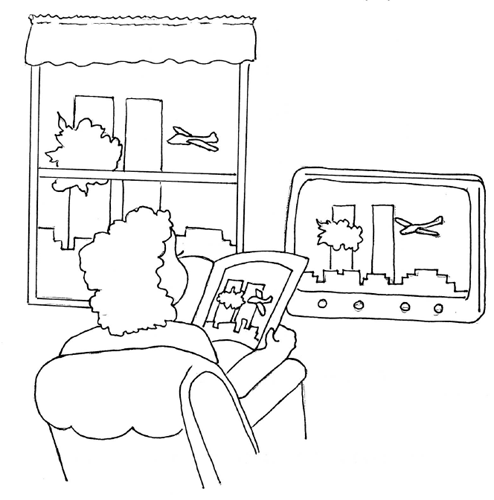
(Image Credit: Something Scary Happened)





Recent comments
2 years 29 weeks ago
2 years 44 weeks ago
2 years 44 weeks ago
2 years 50 weeks ago
3 years 4 weeks ago
3 years 4 weeks ago
3 years 4 weeks ago
3 years 6 weeks ago
3 years 6 weeks ago
3 years 6 weeks ago